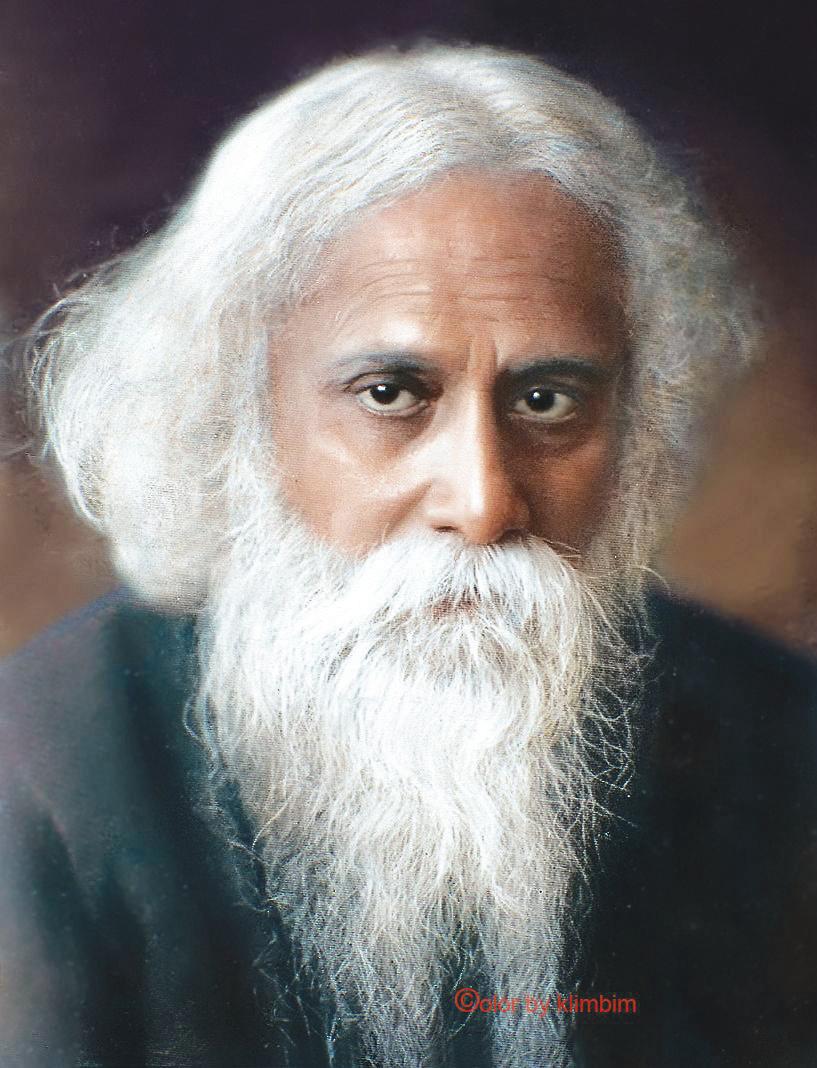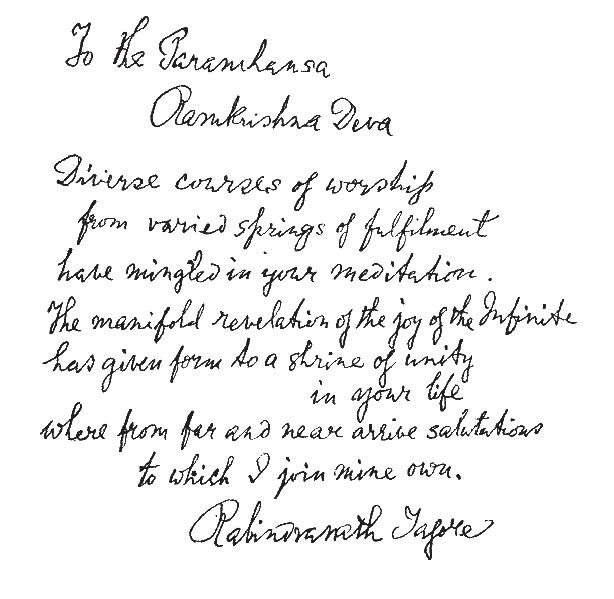
17 minute read
Lessons from Swamis


Advertisement
The Dec 2020 Special Issue of The Vedanta Kesari was on the topic ‘Lessons from Swamis’. New content on this topic is being serialised this year.
Swami Jagadananda
It was sometime in 1916. Ramani Mohan Bhattacharya from Dulari, Sylhet (presently in Bangladesh), a scholarly Headmaster in a Government High School was expounding a passage on renunciation from the Brihadaranyaka Upanishad which states: “One must renounce the moment one feels dispassion.” In support of this statement Ramani Mohan repeatedly stressed that with tremendous will-power one can break the bonds of householder’s life. But his listeners refused to accept that it was possible to leave wife and children so easily. A heated discussion ensued. Ramani Mohan then roared, “Surely, one can renounce the world any moment, if he so desires.” The next moment he got up and walked away to join the Ramakrishna Order. He was married, but did not even go home to meet his wife or settle his worldly affairs.
Ramani Mohan had received mantra-diksha from Holy Mother Sri Sarada Devi in 1910. In 1920 he received ochre robes from Holy Mother and sannyasadiska from Swami Brahmananda. His new name was Swami Jagadananda. Once Holy Mother told him, “In your previous birth you were a Rishi. In your heart of hearts there was a little hankering for enjoyment, so you had to be born again. Now the enjoyment is over, so you have become Rishi again.” Highly respected for his intuitive knowledge of Vedanta, and considered a Jivanmukta, Jagadanandaji translated Sri Sri Ramakrishna Lila Prasanga into English as Sri Ramakrishna The Great Master ,— the authoritative biography of Sri Ramakrishna. He attained mahasamadhi in December 1951 aged 72 at the Ramakrishna Mission Sevashrama, Vrindavan.

Passing away of a Rishi
I had many opportunities to live with Jagadananda Maharaj and study scriptures. It was a rare opportunity to study Vedantic scriptures with him, because he was a living example of the spirit of Vedanta. In 1951, after the passing away of Swami Virajananda Maharaj, the 6th President of the Order whom I served as a personal attendant, I got a long leave. I went to Kishanpur where I practiced tapasya and studied scriptures under Jagadananda Maharaj and also rendered him a little service. Suddenly, he had a heart-attack. As there were no good medical facilities in Dehradun, he was taken to our Vrindavan Sevashrama Hospital for treatment. I accompanied him and continued my spiritual practices while serving him. Maharaj too continued to conduct classes for me and 2-3 other sannyasis. He was explaining Brihadaranyaka Upanishad. One day there was a great

excitement in the class. He was explaining ब्रह्म स्तयं जगलनमथया, “Brahman alone is real, the world is illusory”, because दृशय्तिात् सिपनदृशयित् “whatever we see is illusory as in a dream.” He declared that the argument ब्रह्म स्तयं जगलनमथया is invincible and continued to explain it for a long time. I was a student of philosophy and knew a little about how to argue. So, as he finished, I said, Maharaj you said this Truth, Brahman cannot be known by argument or logic etc. But now you say दृशय्तिात् सिपनदृशयित्. You are contradicting yourself Maharaj!” He became furious; his appearance became blood-flushed. He said, “You! You are doing mischief! You understand, but yet you argue. Well! Well! Well! You hear, you hear, you hear from me now (patting his chest), I have known this truth, I have known this truth not by argument not by logic but by Mother’s grace.” The great Vedantin ended by saying ‘Mother’s grace’! But he was so excited that later in the evening he had an heart-attack.
The doctors declared that the end would come very soon. In those days, there was no proper treatment for heart patients in our hospital. The next day towards the evening when his last moment drew near, Maharaj began to gasp for breath with his eyes closed. His legs were turning ice-cold. The doctors advised me to massage his legs with brandy. I started massaging his legs. Suddenly he opened his eyes, looked furiously at me and exclaimed in his native Sylhetian Bengali dialect, “Kita karo? Kita karo?—What are you doing? What are you doing?” I answered in a low voice, “Your legs are turning cold, so I am massaging them.” But in a high pitched voice he asked me, “विज्ानमाननदं ब्रह्म, Do you understand that? Do you remember that? If you don’t, everything is meaningless, futile. This knowledge and eternal joy is Brahman! If you haven’t known this, then it (i.e., this messaging) is futile. Have you known विज्ानमाननदं ब्रह्म?”
My God! In that condition, he did not talk of his pain, but asked me “What are you doing?” and shouted विज्ानमाननदं ब्रह्म. He repeated the great statement in such a manner that the sound appeared to arise churning his body and mind. When the final attack came, he forced me to make him sit-up. Then reclining on my shoulder and uttering “Maa, Maa” he passed away!
On his face there was no sign of the pang of death. On the contrary, after a little while the face started beaming with light. Though his body became ice-cold, the body and face were radiating light. When his body was being taken to Yamuna for immersion, an elderly sannyasi protested, “Why are you taking a living man?” We said, “He is no more.” But he did not believe and madly protested again and again. Finally according to the North Indian tradition, we immersed his body in the Yamuna tying it to a long fat stone. — Srimat Swami Atmasthananda Ji Maharaj, 15th President of the Ramakrishna Order (Sources: A talk delivered by Revered Maharaj available at https://www.rkmstudentshome.org/audiogallery/ & Centenary Commemorative Souvenir, Ramakrishna Mission Sevashrama, Vrindaban, 2008)
Swami Purushatmanada
Adisciple of Holy Mother Sri Sarada Devi Swami Purushatmananda (also known as Jnanendra Maharaj) joined the Ramakrishna Order in 1920 at the Habiganj Asharma (now in Bangladesh) of which he was one of the founder members. He received sannyasa-diksha from Swami Vijnanananda in 1937. He served as the first Secretary of Silchar Ashrama, Assam from 1939 till his passing away in 1962 aged 67.

Mother, wait a little, I am coming!
Swami Purushatmananda Maharaj was so close to Holy Mother Sri Sarada Devi that he would freely express his pique with her and sulk at her. Once during the Durga puja it rained in the night and the road in the Silchar Ashrama was reduced to a squelchy mud track. The next morning, Maharaj started fetching water from the pond and pouring it on the road making it more splashy! When a devotee asked why he was doing so, Maharaj, expressing his anger at Mother said, “Since Mother does not want anyone to come to her well-dressed, I am pouring more water on the road— let all come splattered with water and mud.”
In July 1962 Purushatmananda Maharaj was admitted to the P. G. Hospital, Kolkata, due to aneurysm of aorta with no chance of recovery. Later he also developed cancer in the lungs. On 21 December, just a few minutes before passing away at 4.35 A. M. he, though physically extremely weak, suddenly sat up on his bed and began to utter the name of Sri Ramakrishna. A little later he said, “O Mother, you have come, wait a little, I am coming.” Saying this he looked at the patients around him and told them, “Brothers, are you awake? My time has come, I am now going.” After this he lay down on his bed never to rise again. — Swami Nareshananda, Secretary, Ramakrishna Mission, Imphal
Swami Saswatananda
Adisciple of Swami Shivananda, Swami Saswatananda joined the Ramakrishna Mission Home of Service, Varanasi in 1919. He received his sannyasa-diksha from his guru in 1923. From 1925 to 1928 he served in Ramakrishna Mission Students’ Home, Chennai and from 1936 to 1944 as the President of Chennai Math. In 1947 he was made a Trustee and Assistant Secretary of the Ramakrishna Math and Ramakrishna Mission in which capacity he served till his end in August 1963 aged 69.


Keeping the word even at the last hour
Swami Saswatanandaji, as an Assistant General Secretary of the Ramakrishna Math and Mission, was in charge of posting monastic workers. One brahmachari, ‘Junior Ravi’ as he was called, was serving as assistant to Bhandari in the main Temple. He approached Saswatanandaji for a change of centre. The swami promised to give him the change. But Saswatanandaji suddenly fell very ill and had to be taken to the hospital in haste. It was uncertain if he would return alive from the hospital. At the moment when he was being carried out on a stretcher, he remembered his promise to the brahmachari. He immediately sent for a swami from the Main Office, told him about his promise and strongly requested that he arrange for the brahmachari’s transfer and report to him when it was done. That was his steadfastness to truth. — Srimat Swami Gautamananda Ji, Vice-President, Ramakrishna Math and Ramakrishna Mission

Rabindranath Tagore on Karmayoga
SHUBHRA JYOTI DAS
The term karmayoga literally means ‘union through action’. Here union stands for unification of the jivatman with the Paramatman. This article presents Rabindranath Tagore views on karmayoga which are founded on the Upanishads.
According to Tagore, human life Upanishad describes as तच्छुभ् जयोवतषां जयोवतमः consists of three states – natural, and is called Brahman in the Upanishads. ethical-religious and spiritual.1 Tagore notes that the Western civilisation Our natural disposition is matter-oriented. We has focussed on achieving material prosperity tend to accept the world of sense-objects as the and developing the external only reality; and hence, all our aspect of human existence. efforts are directed towards Even God has been treated as the world outside, and we a developing phenomenon.2 measure success in terms of On the contrary, Indians have tangible parameters. concentrated on developing
In the second state, the inner dimension of human resorting to religious and life. Tagore attempted to ethical codes of conduct, we bridge this gap by combining mark a definite river as material and spiritual wellauspicious, a specific food as being, taking help from the offensive, a particular ritual as profound Upanishadic productive and so on. We insights. consider even God as an Tagore strongly opposes external object and try to the view that karma creates appease Him through various the bondage of the soul, as acts of sacrifices. But soon we Rabindranath Tagore propagated by the jnanayogins discover the limitations of these acts. in India.3 He rejects the proposition
In the spiritual state, we resort to our that liberation means acquiring freedom from inner world and put our best efforts to all forms of activities. He observes that a set of eradicate all our tendencies for external people have wrongly identified karma as an growth. We control those desires which obstacle to liberation - in the same way as some otherwise control us in the other states, and we mistake a disciplined life to be an impediment start discovering the great source of bliss and to happiness. Brahman is the substratum of all light within us: the Truth which Mundaka activities as the Taittiriya Upanishad declares,

“Crave to know well that from which all these beings take birth, that by which they live after being born, that towards which they move and into which they merge. That is Brahman.” But then, how is karma related to Brahman? We can neither say that they exist as parallels without any interaction, nor can we think that Brahman has become bound in His karma like a spider in its web.
Tagore again cites Taittiriya Upanishad which declares, “From Bliss, indeed all these beings originate; having been born, they are sustained by Bliss, they move towards and merge into Bliss” and affirms that Brahman is anandasvarupa. Thus, in Tagore’s view, actions are of two kinds – one springs from deficiency and another from sufficiency i.e., bliss. The first kind of act binds us but the second doesn’t, rather it sets us free. Thus for him, action is the essence of bliss; and bliss expresses itself through various activities. Infinite bliss has infinite expressions, so the bliss of Brahman is substantiated continuously through various activities. Brahman is blissful through His acts, and through acts only He is free.4 We too, in our daily life, become free through blissful activities alone.
Ishopanishad declares that it is impossible for anyone to abandon actions completely. It therefore prescribes – कुि्न्ेिेह कमा्वण वजजीविषेच्तं समामः। “one should desire to
live for a hundred years by performing activities.” Tagore highlights that it is recommended by those rishis who have fully experienced the bliss of Atman. They neither proclaim karma as producing bondage of the soul nor see life as a synonym of pain. So, we can neither pronounce action as a product of passion nor set its rejection as a precondition for entering into the path of sadhana. For Tagore, it won’t at all be wise to dissociate ourselves from these two. Referring to the Ishopanishad’s passage which reads, “Into greater darkness they enter who revel in passive inaction”, he remarks that karma without Brahman is darkness but Brahman without karma is void as well.
The solution lies in the combination of action and knowledge, as Ishopanishad affirms: अविद्यया मृ्तयंु ती्तिा् विद्ययाऽमृतमश्ते। “jiva attains
immortality through knowledge after overcoming death through action.” To quote Tagore, “Whatever it may be, if activity is the essence of bliss, then by means of action itself there can be union with the blissful Brahman. This is called karmayoga in the Gita.”5 He maintains that the mind of a karma yogi is comparable to that of a devoted housewife who performs her day-to-day activities out of sheer joy and not to fulfil any of her selfish ends.
Consequently, man has been prescribed यद्यत् कम् प्रकुिवीत तद् ब्रह्मवण समि्येत् “whatever act
you perform, dedicate it to Brahman.” This attitude helps to get rid of jealousy, hatred, greed, and cravings; and consequently, we are able to transform our acts to pure bliss by giving up their fruits thereof. According to Tagore, had this bliss not been already present in nature, no one would have made any effort to attain this bliss. Besides, by aligning our efforts with that blissful source of all exertions, we become absolutely fearless.
Tagore maintains that our activities are primarily kindled by external stimulants, and problems arise when they overpower us; and the Upanishads have talked about shreyas only to avoid such overshadowing. Different kinds of external desires (vasanas) work as a source of distraction for us. They have to be regulated by bringing them under one purpose (iccha or uddeshya). Vasana is external and overwhelming; but iccha is internal and integrating.
As for example, if someone has different materialistic vasanas like owning a good house, a car, clothes etc., he will have to bring them
under one iccha of earning money. Wealth, in For Tagore, a garden created by cleaning this case, will fulfil all the desires. Additionally, a landscape is verily an expression of the he has to control many of his petty desires. The beauty latent in human mind. Just as a poet internal purpose must rule over the external follows the rules of meter while composing a desires for enhancing productivity and poem, knowing that rules are not hindrances to creativity and not vice-versa. But an individual his expression of joy, karmayoga too is not might also have a variety of purposes. Apart opposed to freedom. In fact, work should be from material possessions, he might have non- treated as instrumental and not an impediment material or subtle purposes like attaining name, for liberation. Simple inactivity too is not fame etc. Consequently, the internal purposes freedom. may also create a distraction similar to one Tagore makes a very interesting remark created by the external desires. about the nature of attaining Brahman, the goal
Therefore, all the internal purposes must of karmayoga. He notes that Brahman cannot also be brought under one be another object added to goal to avoid the final our list of wishes.8 Brahman disruption. Welfare of all Sadhana is feeling has to be realized not as (mangal-iccha) is that final the unity with the Truth something separate from us, aspiration which should in all activities, all thoughts but as the existence of all give orientation to and all efforts. that exists – as is mentioned everything else. For Tagore, in the Ishopanishad, “All this this must be the universal is to be covered by God.” purpose of all work and a solution to all the This implies that every small entity of the problems created by desires. The fulfilment of universe is filled by the presence of that Truth. all undertakings is in the welfare of everyone. This attitude gives us a feeling of fulfilment Work gets transformed to Brahmopasana6 or even in small achievements. worship of Brahman through this means. Further, the Upanishads say that Brahman
This mangal-iccha prompts us to make is already attained by all of us. Why then do we small sacrifices and subsequently leads us to not realise that Truth? Tagore observes that it renunciation. Nature does not support is because we have not surrendered ourselves stagnation and hence our desired objects will completely.9 In Tagore’s vision sadhana is willy-nilly slip out of our hands. Therefore, the feeling the unity with the Truth in all activities, practice of letting things go, on a daily basis, all thoughts and all effort . will help us overcome this situation. This Who is the best among the knowers of freedom, this mastery over an action can be Brahman? Looking for an answer to this gained only through renunciation. He writes, “If question in the Upanishads, Tagore discovers we want to become performer of actions, we that one who abides in the bliss of Brahman, have to be free. That is why only detached who acts in Brahman and remains active, is the actions have been called karmayoga in the Gita. best among Brahmavids. The way an artist We gain mastery over actions by doing them in rejoices in his creations and a poet in his poetry, non-attached way; or else we become a part of a Brahmavid expresses the Infinite by truth, the action through attachment and never beauty and goodness through all his big and become performer of them.”7 small acts. Escapism is ruled out as a way to


emancipation. For Tagore, sadhana is not rejection, but dedication of each act to Brahman. In this way the self keeps on surrendering itself to the Infinite, and every act becomes a means to connect with the Truth. That is perfection, freedom and heaven since the world gets transformed to an abode of bliss.10
Conclusion
Rabindranath Tagore gives a down-toearth interpretation of karmayoga. He rightly points out that a proper understanding of karmayoga can help to erase the artificial distinction we have drawn between work and pleasure. By devoting ourselves to the Truth through all our activities, we can be more productive and creative. Unalloyed happiness is accessible to everyone.
Further, Tagore’s proposal to combine the best of East and West has become most relevant in the 21st century. None can overlook the impact of globalization nor should anyone get uprooted from his own culture. In the busy modern life, if we can implement Tagore’s formula by practicing self-surrender, each of our little efforts made on a daily basis will take us to perfection. In a nutshell, Tagore presents the modern man a realistic blueprint of how to practice karmayoga and reap its benefit by rising to excellence.
References
1) ‘Tintala’. Rabindra Rachanavali. [hereafter
Rachanavali]R.N.Thakur. Kolkata: Pashchibanga
Bangla Academy, 2015 , Vol.16, p.485 2) ‘Karmayoga’. Rachanavali Vol.16, p.697 3) Ibid., p.445 4) Ibid., p.700 5) Ibid., p.446 6) Ibid., p.702 7) ‘Tyaga’. Rachanavali Vol.16, p.169 8) ‘Akhanda Pawa’. Rachanavali Vol.16, p.543 9) ‘Atmasamarpan’. Rachanavali Vol.16, p.544 10)‘Karmayoga’. Rachanavali Vol.16, p699
Tagore on Sri Ramakrishna
To the Paramahamsa Ramakrishna Deva
Diverse courses of worship from varied springs of fulfillment have mingled in your meditation. The manifold revelation of joy of the Infinite has given form to a shrine of unity in your life where from far and near arrive salutations to which I join mine own.





